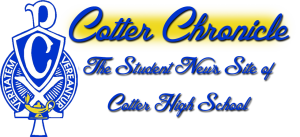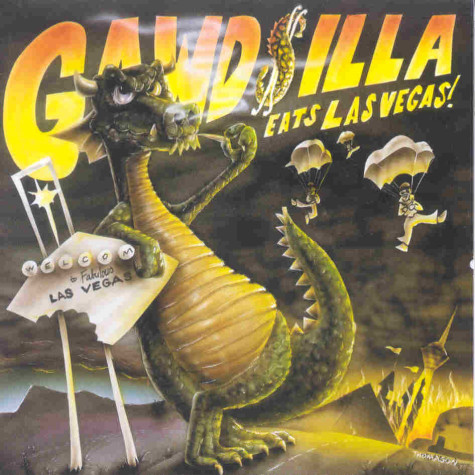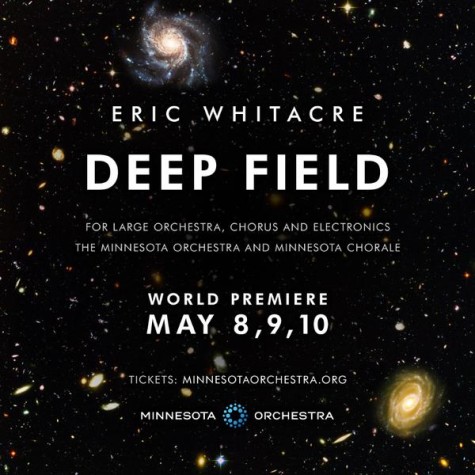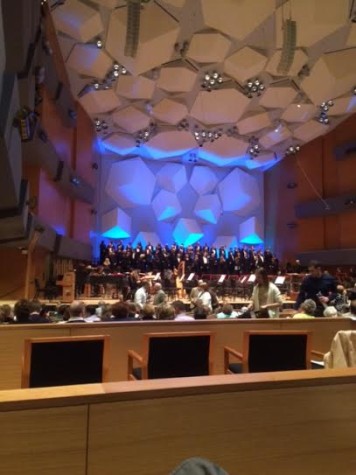Whitacre Introduces Four World Premieres at Minnesota Orchestra
Best known for his songs “Sleep”, “Lux Aurumque”, and “Seal Lullaby”, Eric Whitacre, one of the world’s up and coming composers, debuted not one, but four world premieres on Friday May 8, at the Minnesota Orchestra.
As the crowd silenced, Whitacre started out the night with an old favorite, “Lux Aurumque”. This was the first time it had been performed as an orchestral version. Following the slow sounds of “Lux Aurumque”, came the fast and upbeat “Blow It Up, Start Again” composed by Jonathan Newman, a friend that attended Juilliard School with Whitacre. Next came “Quiet City”, which featured the solos of Marni J. Hougham on the English horn, and Manny Laureano on the trumpet.
Rounding off the first half of the show, was the world premiere of the orchestral version of “Ecstatic Waters”. Coming in with a time of 25 minutes, the five movement composition, composed by Steven Bryant, another one of Whitacre’s old Juilliard schoolmates, went through phases from slow and contemplative to fast and jumpy.
After a 20 minute intermission, allowing audience members to head to the restroom, or grab a cold beverage, the lights dimmed, and as the strings stayed quiet, the Minnesota Chorale came on.Starting out the second set with “Pilgrims’ Hymn” composed by Stephen Paulus, next came the third premiere of the night. Whitacre’s new piece “Godzilla Eats Las Vegas!”, a two-act story using both the Minnesota Chorale and the Minnesota Orchestra, along with stage directions featured in the program, not only had the audience chuckling at the hilarity of the stage directions and comical screams coming from the choir, but also listening to a piece that, end to end, was original and fun to listen to. As the Elvis Impersonators, or, Elvi, as they are referred to, finally rid Las Vegas of the fantastic beast (or so they think…), on came the final piece of the night.
As Whitacre turns to the audience, to introduce his final world premiere of the night, he does what some people may have seen as unexpected, and pulls out his cell phone. Whitacre then introduces “Deep Field” and the app, created by Whitacre and his team, of the same name. Inspired by the “deep field” image from the Hubble Telescope, Whitacre explained what the app was used for. “Musically objects come into focus, then go out of focus in a grand, majestic way. As the work nears its end, everyone in the audience, using pre-downloaded apps, will start their phones at the same time to my downbeat, creating a kind of shimmering, ambient music. Each phone will hold a different object (galaxy), slowly rotating. Holding up the phones, together we will recreate the spectacle of that image in real time,” stated Whitacre in an interview for the Minnesota Orchestra.
After all was over and done, four world premieres out of the way, Whitacre gave a bow, walked off the stage, and went into the lobby where he conducted an audience meet and greet for over two hours.




